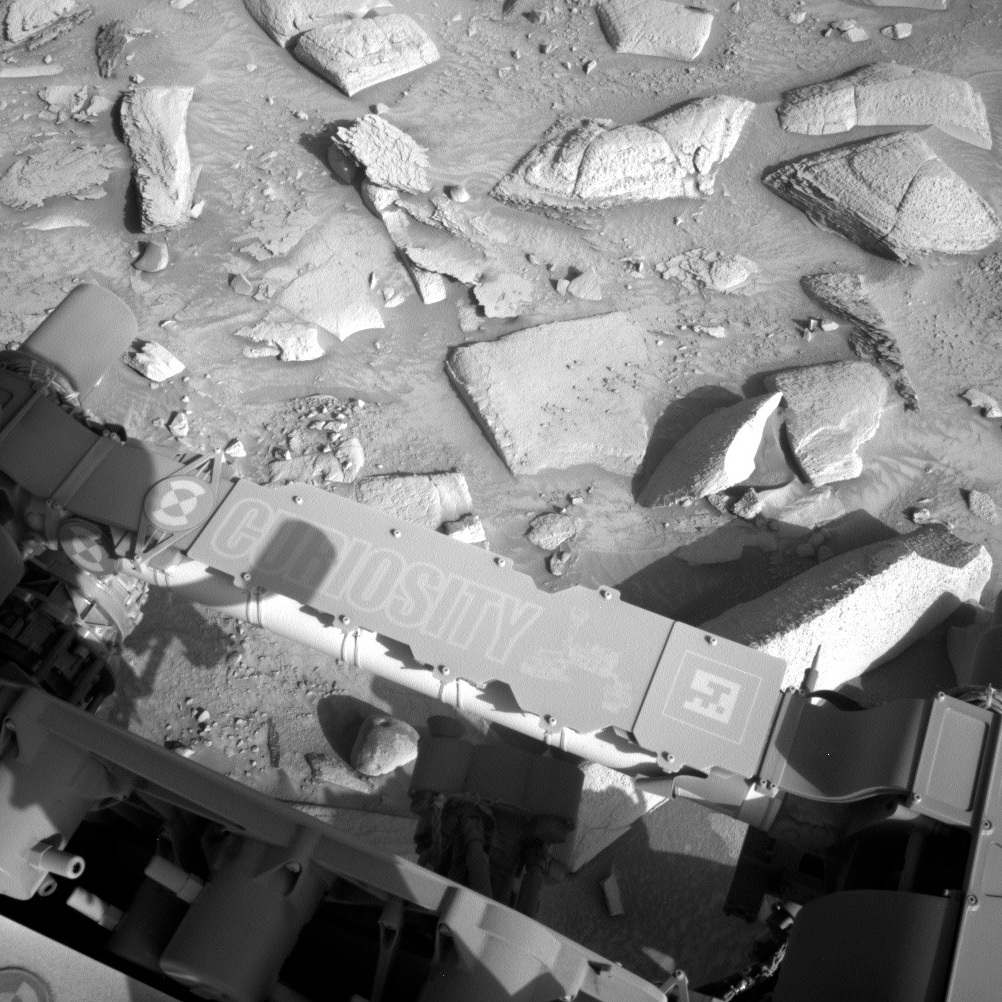Earth planning date: Wednesday July 26, 2023
As in many recent MSL plans, power limited what we could fit into today's 2-sol plan. Why is power so limited? As expected, MSL's plutonium power source continues to slowly decay, so it takes longer to recharge the batteries than it used to. But the engineering team has done a great job over the years finding ways to conserve power, and the power limitations are therefore not as severe as they were expected to be. The fact that it's winter at Gale crater right now also doesn't help – we need to run our heaters a lot longer in the winter, and that means using a lot more power.
The rover will still be very busy, using its remote sensing and arm instruments and driving on the second sol.
The plan for Sol 3900 starts with Navcam and Mastcam measurements of dust in the atmosphere and a Mastcam mosaic of a nearby crater. Then ChemCam will shoot its laser at a rock named 'Curini River' and the Right Mastcam will document the resulting laser pits. After a mid-afternoon nap to recharge the batteries, the arm will be deployed to brush the dust off a rock target named 'Porta Walter' (just above center in the above image) and take MAHLI images of the cleaned spot. MAHLI will also image a thin outcrop named 'Purace' before the APXS is placed on it for an evening integration. The APXS will then be moved to the Porta Walter brushed spot for another evening integration.
On Sol 3901, Navcam will search for dust devils and Mastcam will acquire a multispectral observation of the brushed spot. ChemCam then gets busy, with a LIBS measurement of elemental chemistry on 'Crique Tino,' near Purace. Right Mastcam will document the laser pits on Crique Tino before the rover drives toward the southeast. After the drive and the post-drive imaging needed for planning on Friday, MARDI will take another twilight image and SAM will perform and engineering baseline test overnight.
I'm planning to retire at the end of this week, so today was probably the last time I will be scheduled to help with MAHLI/MARDI uplink planning. It has been a bittersweet day, as I have really enjoyed MSL mission operations since landing and will miss being heavily engaged with the many expert scientists and engineers on the project. I have been very fortunate to be able to work with such capable, bright people over the years, and look forward to following along as the exploration of Aeolis Mons (Mt. Sharp) continues. Go MSL!
Written by Ken Herkenhoff, Planetary Geologist at USGS Astrogeology Science Center
from NASA Mars Rover Curiosity: Mission Updates https://ift.tt/Ur2vOnT

Comments
Post a Comment